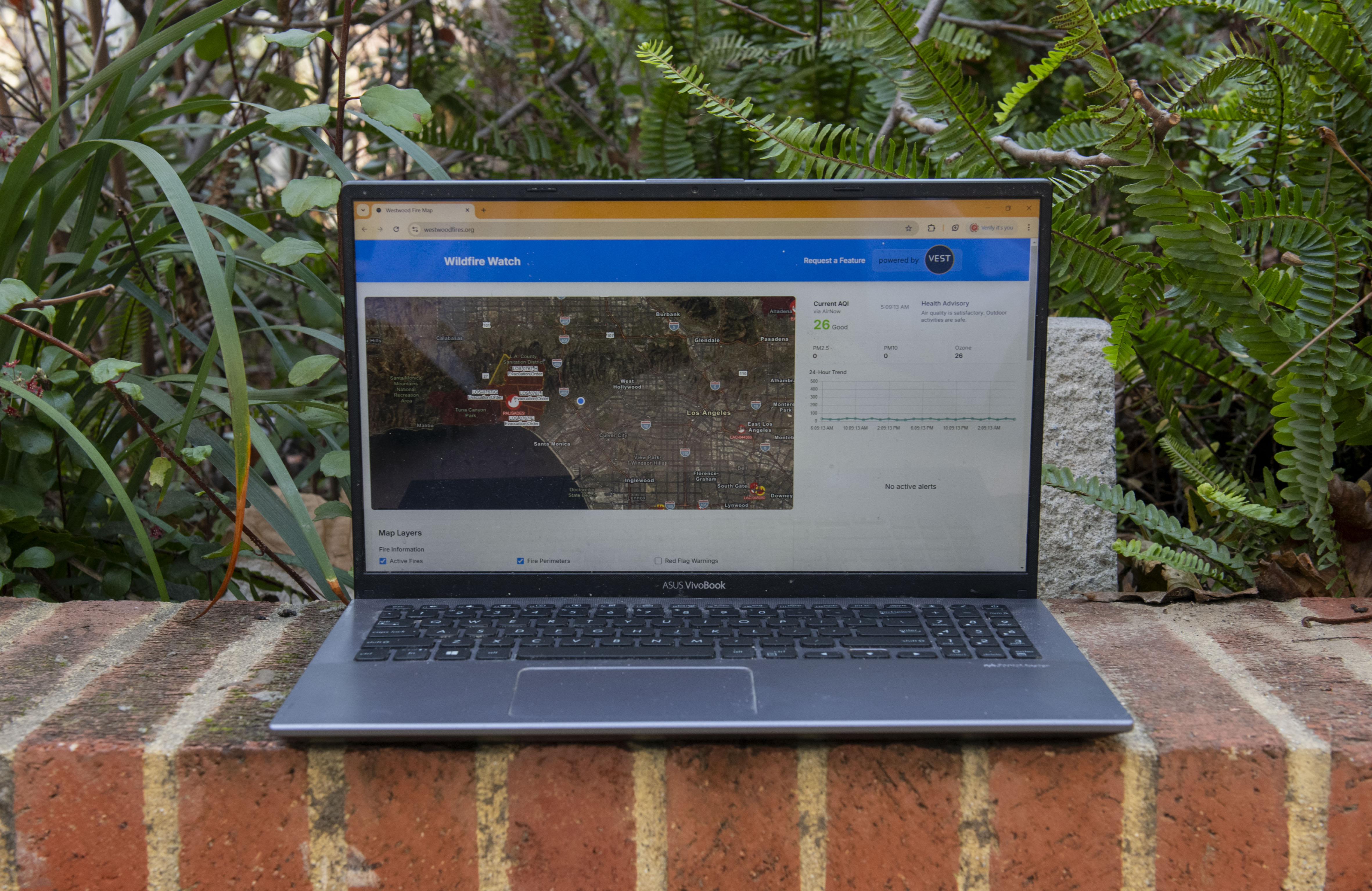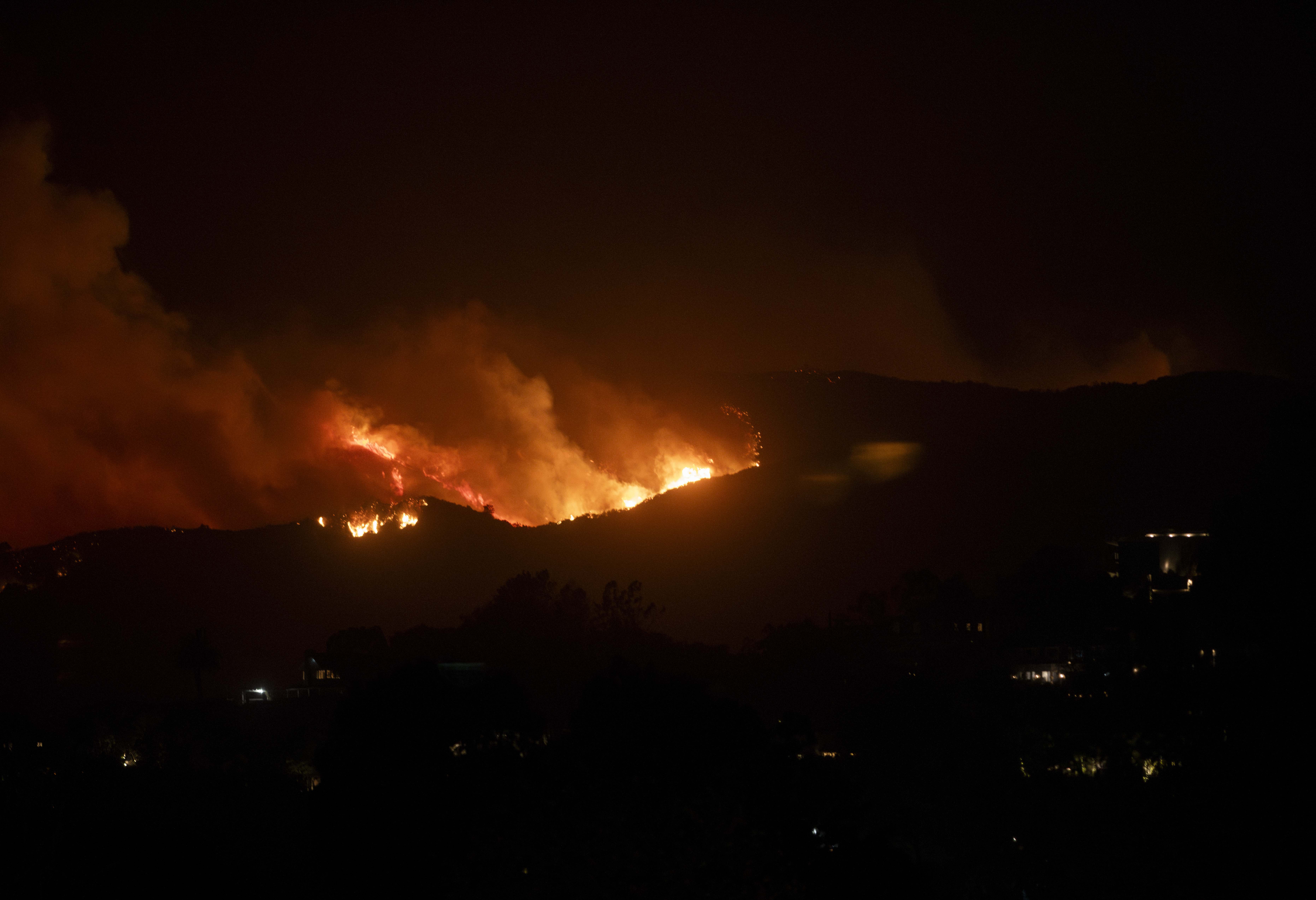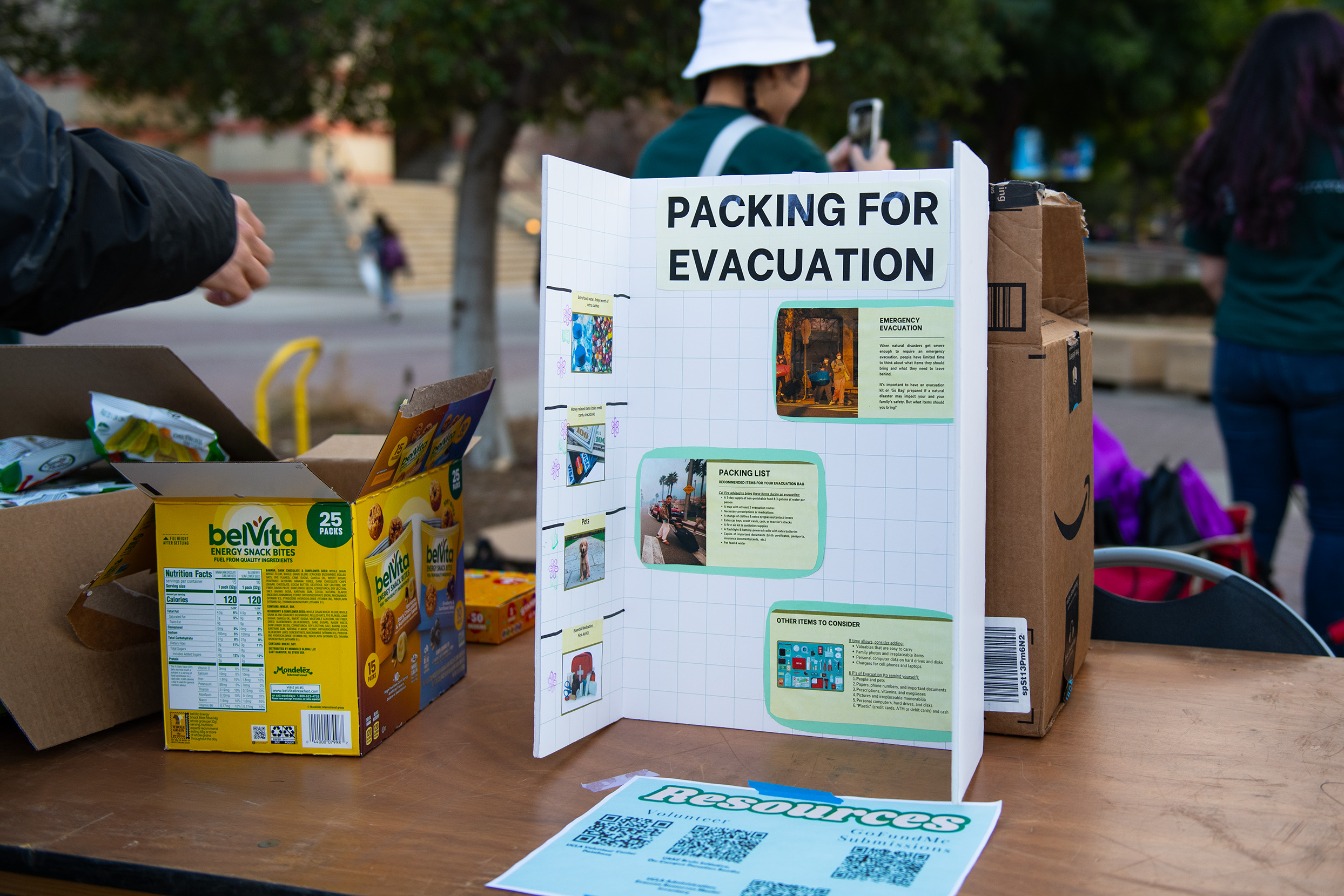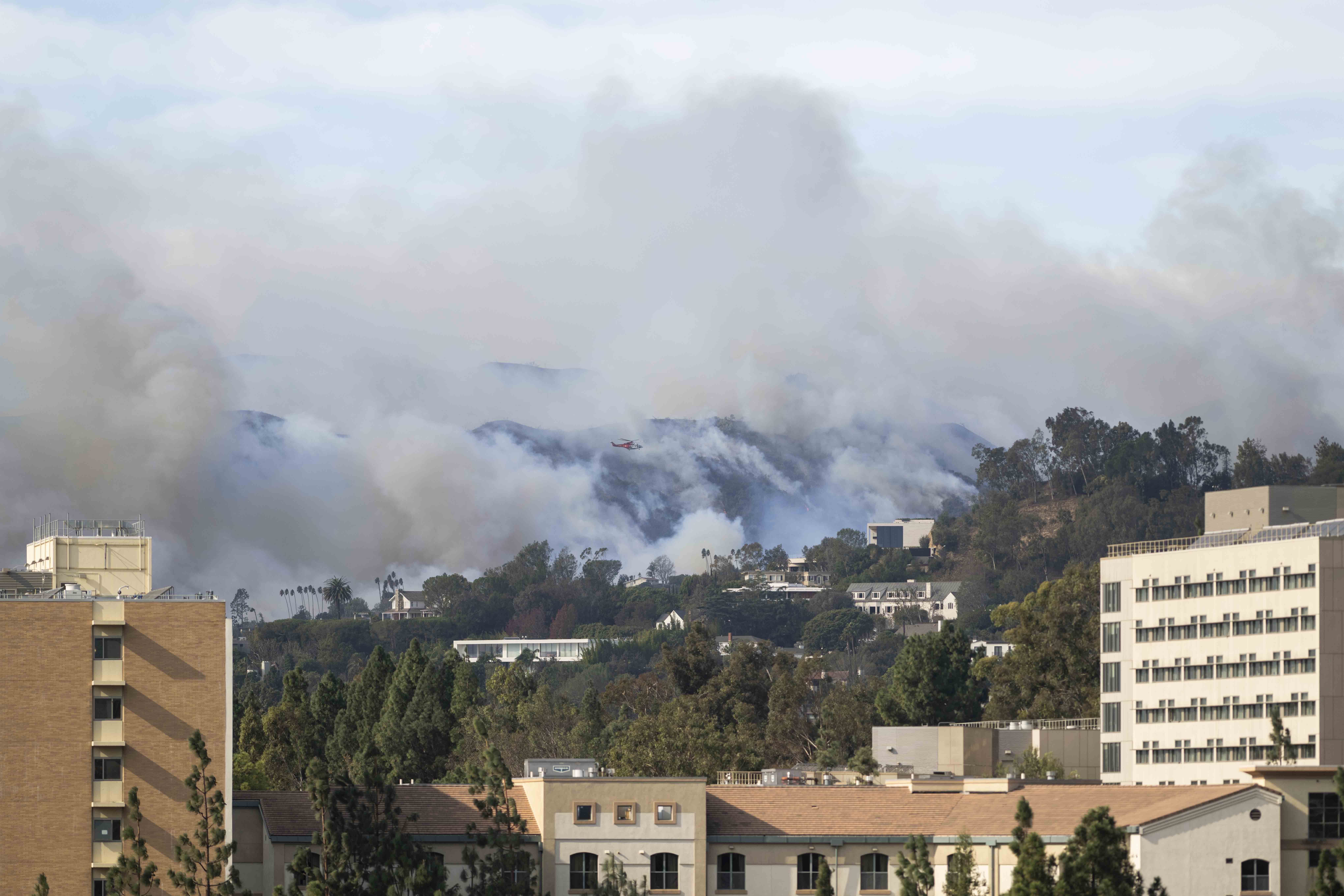Experts examine narratives around wildfires in Fowler Museum event panel
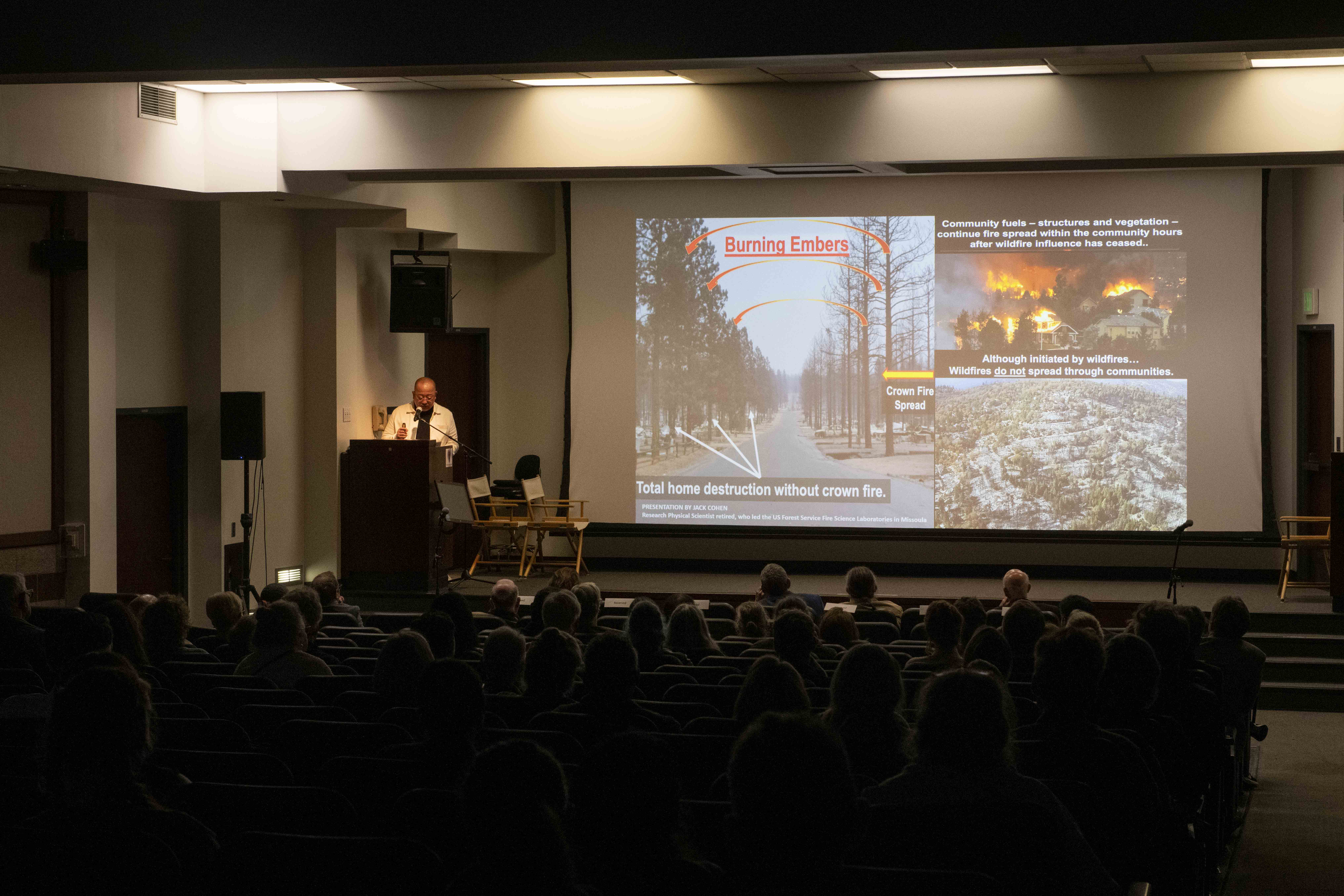
A panelist at the “Why History Matters: L.A. Wildfires Past, Present, and Future” event speaks at a lectern. The event, held at the Fowler Museum, challenged historical narratives of fires. (Edward Ho/Daily Bruin)
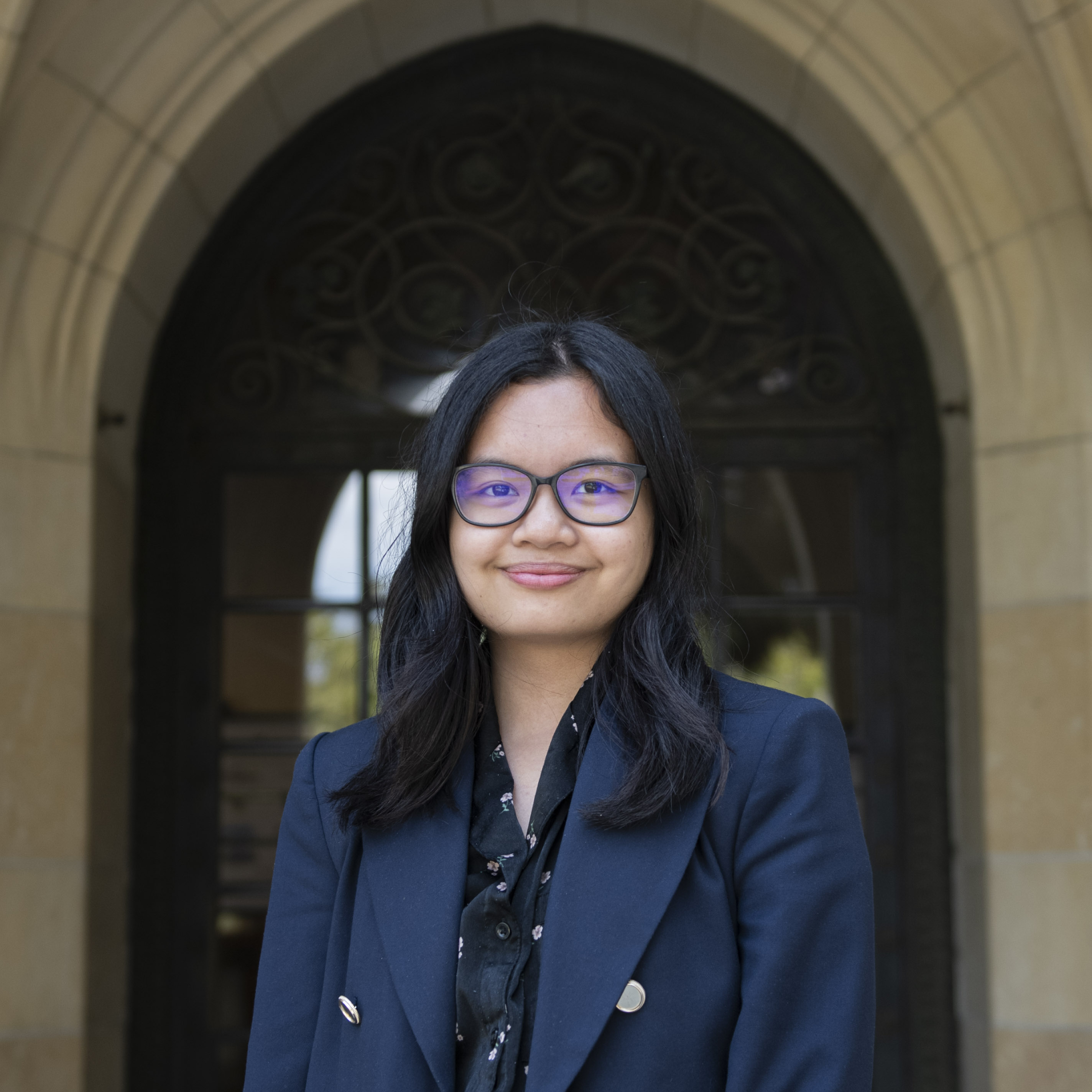
By Amy L. Wong
May 12, 2025 1:13 a.m.
Experts discussed patterns in the history of fire in the context of the January Los Angeles County fires at the Fowler Museum on April 30.
The panel, titled, “Why History Matters: L.A. Wildfires Past, Present, and Future,” was created in conjunction with one of Fowler’s exhibits called “Fire Kinship: Southern California Native Ecology and Art,” said Amy Landau, the Fowler Museum’s director of education and interpretation, during the introduction of the panel.
The exhibition, partly financed by Getty as part of the PST ART: Art & Science Collide initiative, challenges the narrative that fires are always destructive or illegal, Landau said in her speech. Instead, Landau said that fire can be seen as a generational resource used by indigenous communities.
“These histories and practices remain alive, even if too often dormant in our K through 12 and university curricula. They offer not only memory, but methods for rethinking our relationship to land, to fire and to each other in the face of increasing and devastating mega fires,” she said.
Gerald Clarke Jr., a member of the Cahuilla Band of Indians, said during his presentation that in indigenous culture, nature is not viewed as a resource to be used to build wealth. Instead, Clarke said his tribe and other indigenous people view themselves as a part of the ecological system.
Indigenous people also understand fire as an integral part of the local ecology, Clarke – a professor of ethnic studies at UC Riverside – said during his presentation.
“We see fire as this element that plants need, that animals need and the system that was developed over thousands of generations,” Clarke said during his presentation. “What we’ve developed is what we call traditional ecological knowledge, and you can see evidence of that upstairs in the exhibit.”
Char Miller, a director of environmental analysis at Pomona College, said that one framework to understand the LA fires is in the context of climate change acting as an accelerant.
Nineteen of the 20 largest fires in California’s history have occurred from 2003 to 2025, with 13 of the deadliest fires and 18 of the most damaging fires erupting within the same time period, Miller added in his speech.
Another perspective is to prioritize fire suppression, Miller said in his speech. The founding chief of the U.S. Forest Service – Gifford Pinchot – understood that fire was necessary for the growth of pine species, Miller said in his speech, but there was a pressure to extinguish all fires because the agency viewed fire as a negative.
Another framework Miller criticized was the idea of viewing all growth as good, which leads to housing development in places where fires burn.
“Don’t be surprised when the structures that are incinerated are in places that are of high-severity fire zones or even medium-severity fire zones, because from a political point of view, growth is housing,” Miller said in his speech. “Housing is necessary, and therefore we’ll build on a ridge line, we’ll build in a foothill, we’ll build in a canyon – we’ll build anywhere we want to.”
Travis Longcore, an adjunct professor at the UCLA Institute of the Environment and Sustainability, said he appreciated Miller’s explanation about the unsustainability of the belief that all growth is good. Building in locations known to burn is similar to housing people in a hazard zone, Longcore added.
During the question and answer section of the event, an attendee asked if Miller would prefer cities to have a low or high building density. Miller responded by saying that humans should build vertically to reduce consumption of water, acknowledging that it would lead to high density of buildings.
Although Miller’s suggestion of building up sounds profound, it may lead to issues with heat, said Justin Yue, a fourth-year history student.
As an international student from Hong Kong, Yue added that a significant portion of Hong Kong’s infrastructure is vertical. The heat becomes trapped after it has risen, Yue said, and people are forced to use a lot of air conditioners, which leads to high energy usage.
Miller said in his speech that the LA fires in January are easier to understand with the three frameworks in mind: climate change as an accelerant, fire suppression and the view that all growth is beneficial.
“Put that human geography into places that are supposed to burn, that haven’t burned because of fire suppression, and then you add the accelerant of climate change, and what happened in January is perfectly explainable,” Miller said in his speech. “It’s horrifying, but it’s perfectly explicable.”


